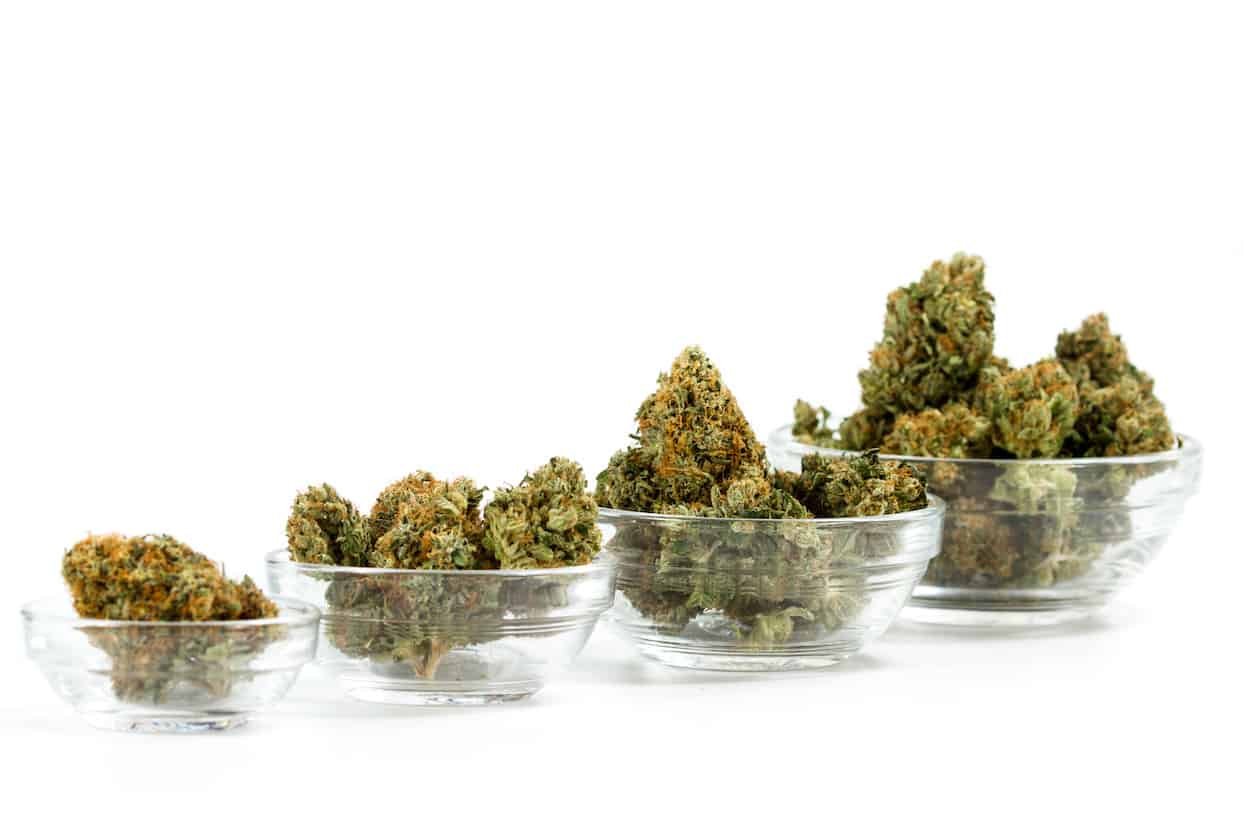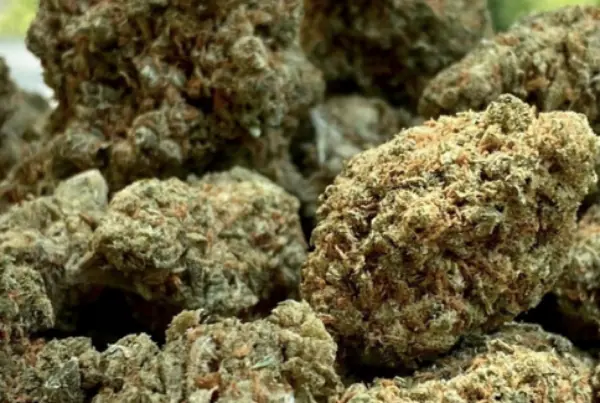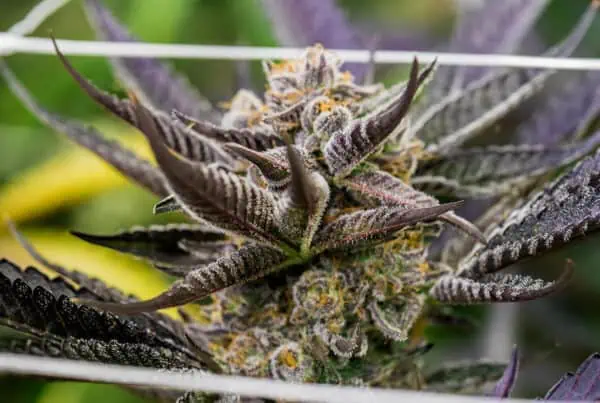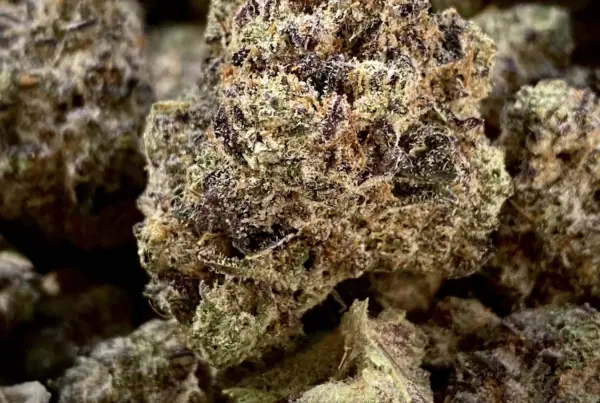TABLE OF CONTENTS
THC has skyrocketed over the last few decades leading to marijuana that is nearly unbelievable.
Today the strongest weed strains blow way those from decades ago.
A person in the 1970s could not have fathomed strains that are testing around 30 percent THC as it would have been the strongest marijuana in the world by far.
The average level of THC during that period was 3 to 4 percent with minimal improvement until the 2000s.
The race to breed a plant with astronomical levels of THC has already started. The beauty of this is that there is competition for nearly every strain.
There are just some that have higher THC levels but a lower THC level strain coming in with decent THC levels can be just as impressive.
Genetics in seeds has played an integral role in the quality of cannabis improving. The crossbreeding of strains has allowed the best aspects of the strongest strains to mend together.
A grower might want a high yield so they create a hybrid with a strain that is known to have massive yields. Examples of high-yielding strains are that of Wedding Cake and Bubba Kush which are both powerful weed strains.
1. Gorilla Glue #4
A favorite among those in the cannabis community, Gorilla Glue #4 or GG4 truly packs a THC-filled punch. A new consumer might understand the true meaning of taking a hit if they are unaware of the THC levels.
Gorilla Glue was made one of the most widely available high-THC strains due to releasing cuttings to growers at the 2015 Cannabis Cup.
What You Should Know About Gorilla Glue:
- Gorilla Glue Strains have already gone to court over the Gorilla Glue name.
- Sour Dub and Chem Sister were the accidental combination that helped create this THC powerhouse.
2. Girl Scout Cookies
Girl Scout Cookies or GSC took the cannabis world by storm and has won numerous awards in the process. The strain was created in San Francisco in 2011 or 2012 but the rest is up for debate.
Phenotypes of this strain like Thin Mint have become increasingly popular. The strain has a lineage in the Cookies family, OG Kush, and Durban Poison.
What You Should Know About Girl Scout Cookies:
- The strain is widely available due to its popularity.
- GSC has tested at 28 percent THC although the average is usually lower.
- Look for additional phenotypes to gain a bit of popularity moving forward.
3. Amnesia Haze
Amnesia Haze has THC levels that hover between 20 and 25 percent. The smooth taste of lemons should not fool you as the smooth hit will uplift you, to say the least.
The popularization of this strain came in Amsterdam where cannabis is legal in coffee shops.
What to Know About Amnesia Haze:
- You will not get actual Amnesia, although you might forget where you put your phone.
- This strain has a massive yield which makes it a favorite among cannabis growers worldwide.
4. Kush Mints
Number 4 on our list of highest THC percentage flower ever is Kush Mints. It has tested up to 26 percent THC as this hybrid of Bubba Kush and Animal delivers an amazing experience for Sativa enthusiasts.
The strain should be grown indoors hydroponically to maximize THC and control the growing environment.
What You Should Know About Kush Mints:
- This is perfect for someone that needs their mood uplifted.
- Kush Mints has also been used medically to help with appetite.
5. GMO Cookies
GMO Cookies is a powerful strain that is a hybrid of Girl Scout Cookies and Chemdog. The strain has tested up to 26 percent THC consistently. Gelato has similar genetics so usage reports are nearly identical.
What to Know About GMO Cookies:
- This is perfect for those that are stressed but do not want marijuana to put them asleep.
- Chronic pain has also been treated by some using GMO Cookies.
6. Chiquita Banana
Chiquita Banana could be the catchiest name on this list with the THC to match. This strain has been tested at 29 percent THC as it is a hybrid of Gelato #33 and Wedding Cake.
Both parents are extremely high in THC which leads to this THC-packed lovechild.
What To Know About Chiquita Banana:
- Expect a banana and lemon flavor when this is smoked.
- Leaves users happy and potentially euphoric.
7. White Tahoe Cookies
White Tahoe Cookies has a high THC content as its genetics don’t give this strain any other choice. White Tahoe Cookies is a hybrid of strains Tahoe OG, Girl Scout Cookies and The White. The strain sports a 27 percent THC content on average.
What You Should Know About White Tahoe Cookies:
- Perfect for a night in as this is an Indica-dominant strain.
- Can help those with insomnia and stress.
8. Godfather OG
Godfather OG truly delivers on its name with a 28 percent THC content. This is a hybrid between XXX OG and Alpha OG that won the 2013 Cannabis Cup for the Indica category.
What You Should Know About Godfather OG:
- The strain broke the record with over 34 percent THC at the 2016 Cannabis Cup.
- Perfect for those that want to relax after a long day.
9. Ghost Train Haze
Ghost Train Haze is a hybrid of Neville’s Wreck and Ghost OG. The THC levels test around 27 percent which makes this Sativa-dominant strain perfect for a day on the town.
What You Should Know About Ghost Train Haze:
- A perfect pick-me-up for a creative like that of a writer as it helps with creative thought.
- Fans of citrus-flavored cannabis will not be disappointed with this strain.
10. Cookies Gelato
Lastly on our list of highest THC percentage flower ever is a simple crossing between Girl Scout Cookies and Gelato. It is the beautiful Cookies Gelato strain. This THC giant tests regularly at 28 percent which is no surprise due to its lineage.
What You Should Know About Cookies Gelato:
- Perfect for those that want to relax without falling asleep. New cannabis users should beware as the amount of THC might be too much for a pleasant experience.
- The perfectly balanced hybrid can be a great addition to any smoker’s cabinet.
Strongest Weed Strains FAQ's
What makes a cannabis strain “strong”?
“Strong” cannabis strains are mostly judged by how much THC (tetrahydrocannabinol) they have. THC is the substance in cannabis that makes you feel high and changes your mind. Strains with a lot of THC, usually more than 25%, are considered strong because they can have strong psychoactive effects, such as heightened sensory awareness, euphoria, and sometimes more anxiety or paranoia in sensitive people.
How is the THC percentage in cannabis measured?
Scientists use chromatography, a lab method that lets them find and measure the cannabinoids in a sample, to figure out how much THC is in weed. The results are given as a percentage, which shows how much THC is in the product compared to its overall weight.
Can a weed strain have too much THC?
A person's tolerance and experience can change what “too much” THC is, but strains with very high THC levels might not be right for everyone, especially those who are new to cannabis or have low tolerances. More powerful effects can come from high-THC strains, which can be too much for some people, causing anxiety, paranoia, or other uncomfortable psychoactive experiences.
What are the effects of smoking a high-THC strain?
Some of the strong psychoactive effects of smoking a high-THC strain are a strong feeling of euphoria, changes in how you perceive things, an increased appetite, and rest. But there are also bad affects that can happen, like anxiety, paranoia, dry mouth, and red eyes, especially for people who aren't used to high-THC cannabis.
Are there medical benefits to using strong weed strains?
Yes, strong cannabis strains may help a lot with some medical problems, like chronic pain, serious nausea, and losing your appetite. Some types of high-THC cannabis can also help people with multiple sclerosis (MS), glaucoma, and some types of seizures deal with their symptoms. But how well it works and whether it's right for a person rely on their condition, tolerance, and medical history.
Are the strongest weed strains more expensive?
Most of the time, yes. Strong types may cost more because they have a lot of THC and have to be grown in a complicated way to get that strong. But prices can be very different based on where you live, what dispensary you go to, and how much is available.
How should I consume strong cannabis strains responsibly?
Starting with a low amount is the responsible way to use strong strains, especially if you're new to it or don't have much tolerance. Watch how you feel and wait before taking in more. Also, it's important to drink in a safe and comfortable place and not drive or operate heavy tools while high.
“
There are over 300,000 jobs in the cannabis industry. CTU trained me for one of them!

Makes $24.50 @ THC +
What are the strongest weed strains?
Some of the strains with the highest THC percentage are:
-Gorilla Glue #4
-Girl Scout Cookies
-Amnesia Haze
-Kush Mints
-GMO Cookies
Conclusion on Strongest Weed Strains Of All Time
Understanding THC levels is important in terms of your enjoyment of marijuana. The strongest THC strain might not be the one that you enjoy as you feel overwhelmed.
Sometimes the strongest weed strains are just too much of a high for some, especially novice users.
THC levels are sure to increase but there are barriers biologically that will prohibit another 30 percent THC jump in marijuana in the next 20 years.

Gavin Kushman
Gavin is a worldly adventurer and cannabis connoisseur, embarking on journeys that take him to the far corners of the globe to explore and document the varied effects, flavors, and histories of both renowned and lesser-known strains. From the misty high-altitude farms of the Hindu Kush highlands to the vibrant cannabis cafes of Amsterdam, Gavin's quest for knowledge spans continents. A recognized authority in the cannabis industry, he frequently lends his expertise to leading publications such as Cannabis Training University, where his captivating blog articles chronicle his unique experiences with different cannabis strains.












 Jeff was involved in an accident where he endured a traumatic brain injury. He had a week-long stay in ICU where brain surgeons
Jeff was involved in an accident where he endured a traumatic brain injury. He had a week-long stay in ICU where brain surgeons  100% risk free money back guarantee within 48 hours after purchase if student has not completed any of the courses or exams.
100% risk free money back guarantee within 48 hours after purchase if student has not completed any of the courses or exams.